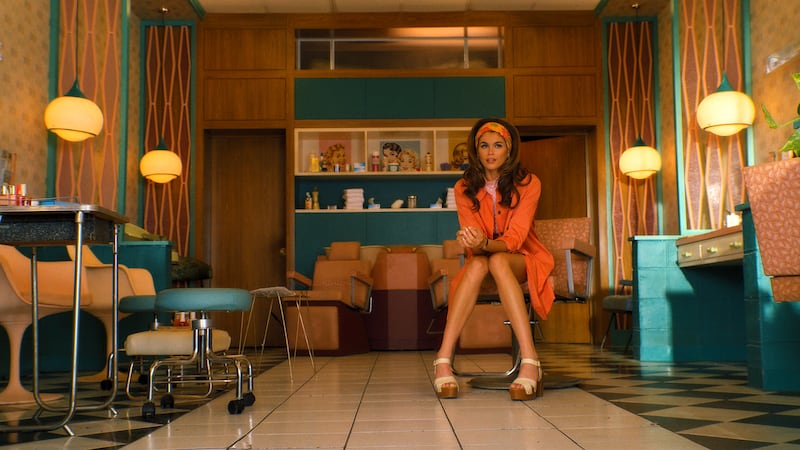The surprise success of Mad Men 15 years ago prompted a deluge of copycats dramas that aped its luxuriant 1960s glow while ignoring its blend of surface glitz and below-the-line social commentary. Mad Men, set against the backdrop of the Madison Avenue advertising industry, was about how gloss and glamour often paper over profound spiritual emptiness. The shows that followed – The Playboy Club, Pan Am etc – fell for the lie that prettiness brings its own rewards. In so doing, they missed the point entirely.
Now, a decade and a half on, as if tumbling out of a time warp, there comes Palm Royale (Apple TV + from Wednesday). It is a study of American high society of the late 1960s that has a Mad Men sense of gorgeous raffishness yet which is as hollow as a bouffant with too much hairspray plastered on.
It’s a shame it so aimless and inert because it is visually ravishing and features a top-rank ensemble. The cast is headed by comedian Kristen Wiig in her biggest straight dramatic role (we shall gloss over Wonder Woman 1984, in which she portrayed a lab assistant who turned into a talking cheetah).

Wiig plays Maxine Simmons, a Tennessee beauty queen desperate to break into the upper echelons of high society at Florida’s Palm Beach in 1969. She has her work cut out. The Palm Royale club is all abuzz with queen bees – including Alison Janney as a domineering charity maven – while singer Ricky Martin is equally waspish as a snobby waiter.
Who were the big winners at the Irish Restaurant Awards? Best restaurant, chef and more revealed
Dara Ó Briain: ‘I’m a man, I can’t manage family at the best of times ... now I’ve willingly taken on a 600% increase in family members’
Wills and family fall-outs: ‘Money and grief bring out the worst in people’
Manchán Magan: The deeper you dive into Icelandic culture, the more of Ireland you find
But it’s never made clear why Maxine is so desperate to join the club. Or, indeed, what’s so prestigious about it in the first place. That lack of context is a damning flaw. Say what you like about Mad Men’s mid-1960s specificity. It was still easy to engage with its exploration of hollow-out marriages and workplace sexism. These were universal experiences to which the series added period charm.
In Palm Royale, by contrast, charm is a destination in itself – one that soon tips into vapidity. That’s a shame because it is packed with stars. Laura Dern plays the leader of a local feminist circle, Cindy Crawford’s daughter, Kaia Gerber, is a beautician who dreams of becoming a catwalk queen and 90-year-old Carol Burnett plays a largely comatose Hollywood star of yesteryear.
That’s quite an ensemble and the period touches – the cars, the clothes, the Richard Nixon speeches blaring from TV – feel authentic. Alas, Palm Royale is a triumph of production value over content. The show is full of flash, yet the story is threadbare, and attempts at blending comedy and soap opera in the mode of Desperate Housewives fall flat. It’s all dressed but has nowhere to go and nothing to say.
















